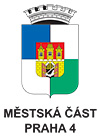Museo internazionale delle Ceramiche
obec: Faenza
adresa: D. Baccarini
stát: Itálie (Italy)
poznámka:
The museum was founded by Gaetano Ballardini in 1908. It originated in a ceramics exhibit at the exposition held at Faenza that year to celebrate the third centennial of the birth of Evangelista Torricelli, the scientist who invented the barometer. The exhibit was located in the rooms of the former monastery of San Maglorio, where the museum was later housed, and it contained the ceramics ware of a variety of Italian and European manufactories as well as a number of pieces of ancient pottery coming from private collections. When the exposition ended, the individual exhibitors' gifts became the starting point of the Museo Internazionale. The museum was backed by many illustrious men, both Italians and foreigners, and their patronage paved the way to a successful take-off. Meanwhile the local founding committee provided the basis for its future development by writing a statute, which was approved by Royal Decree on July 19, 1912. The aims and objectives set forth in that statute are still valid today. They were: to systematically collect and arrange the typical products of Italian and foreign ceramics held to be outstanding examples of art, technique and tradition, with the collaboration of Italian and foreign factories and private collectors; to publish a bulletin of historical and technical studies of the art of ceramics; to create a library of published materials in order to offer scholars a working bibliography of ceramics criticism, history, art and technology; to organise a historical display of the development of ceramics – its art, techniques, forms, use and traditions – in a retrospective show of ceramics ware; to help develop and spread the taste for ceramics decoration in order to intensify its use in the home and in the building trades, for both aesthetic and functional purposes; to hold international competitions for the production of specified practical objects with awards based on “art” and “technique”; to submit all questions regarding art, literature, bibliography, legislation (inventions and patents) and technique in the field to International Ceramics Conventions; to establish an international thesaurus of scientific terminology. The Museum has gradually enriched its international range of items through acquisitions and above all gifts, particularly after the Second World War that destroyed many rooms and collections. Among the generous contributions which permitted to repair the war damages special mention must be given to the Mereghi bequest now exhibited in a separate room according to the donor's wish.
The initial collection, the Exhibit of the Nations, was complemented by specimens of Italian ware and ceramics work by living Italian artists, organized in 1926 into the permanent Exhibit of Modern Italian Ceramics as an Art. in 1916, the Exhibit of Ancient Italian Majolica and the Exhibit of Popular Regional Italian Ceramics were founded. The Far Eastern section was opened in 1919. The museum also had educational exhibits. They contained fragments of Italian majolica found in excavations, prehistoric and classical age pottery, and a display of ceramics of the near East which was greatly enlarged in 1930 by a gift from the Orientalist, Dr Friedrich Robert Martin of Stockholm. Other gifts led to the formation of nucleus of materials documenting pre-Columbian and African ceramics. The development of contemporary Italian ceramics was documented from the 1930s onward through the annual “Faenza” prize competition, and international ceramics was similarly documented from the 1960s on. In the course of the years the specialized library grew considerably, and so did the photographic library – especially in the area of Italian majolica – and the archive of documents regarding the art of Italian majolica. In 1913 the museum began publication of the bimonthly journal "Faenza"” a series of historical studies of the art of ceramics, and, since 1984, of the catalogues of each section together with many other periodical publications relating to temporary exhibitions and educational activities. A ceramics teachings laboratory used mainly by the elementary schools of Faenza area was established in 1979 with the collaboration of Bruno Munari. The laboratory also gives special courses for the Italian as well as foreign teachers and ceramists.
In 1983 a considerable collection of about a thousand ceramics items from Italian, European and non-European regions were bequeathed by the scholar Galeazzo Cora. A massive amount of fragments representing a very rich information source for comparison and attributions was added to it.
This historical cultural and artistic wealth in the coming years will be shown again to the public in wider rearranged rooms, as foreseen in the big project of reorganization, construction of new buildings and formation of new sections which is already being carried out (such as ceramics for coating, interior design, etc.). The first part of the project concerning the laboratories for restoration, photography, research and the equipped depots was accomplished in 1988.
Other important works on the recently bought adjoining buildings are planned for the next years.
zdroj - www.racine.ra.it
Museo internazionale delle Ceramiche
| osoba | narození |
| Dolejš Václav | 27. 7. 1925 |
| Radová Šárka | 3. 5. 1949 |
| Viková Jindra | 2. 2. 1946 |










